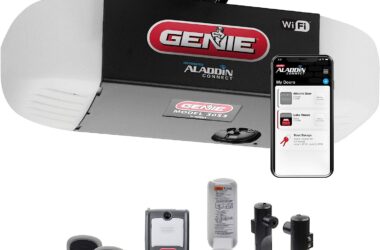Introduction:
The emergence of smart home technology and the Internet of Things (IoT) has transformed the way we interact with our living spaces. From thermostats and security systems to lighting and entertainment devices, smart home devices have become increasingly popular among homeowners seeking convenience, energy efficiency, and enhanced security. In this blog post, we will delve into the world of smart home devices, exploring their benefits, types, and considerations for a seamless smart home experience.
Understanding Smart Home and IoT Devices:
Smart home devices refer to everyday objects embedded with sensors, software, and connectivity features that allow them to communicate and interact with each other and with users. These devices are typically controlled through a smartphone app or voice commands, enabling users to automate tasks, monitor their homes remotely, and create personalized environments.
Internet of Things (IoT) technology forms the backbone of smart home devices, facilitating their connectivity and enabling them to share data over the internet. IoT devices communicate with each other through wireless protocols like Wi-Fi, Bluetooth, or Zigbee, creating a network of interconnected devices within a home.
Benefits of Smart Home Devices:
- Convenience: Smart home devices offer unparalleled convenience by automating routine tasks. For instance, you can set your coffee machine to start brewing when you wake up or schedule your lights to turn on as you enter a room. These devices streamline daily activities and save time and effort.
- Energy Efficiency: Smart thermostats, lighting systems, and power outlets help optimize energy consumption by adjusting settings based on occupancy, time of day, or user preferences. They can learn from user behavior, adapt to changing conditions, and reduce energy waste, leading to significant cost savings and a reduced carbon footprint.
- Enhanced Security: Smart home security systems integrate features like surveillance cameras, motion sensors, and smart locks, providing users with real-time alerts and remote monitoring capabilities. With these devices, homeowners can secure their properties, deter potential intruders, and gain peace of mind even when away from home.
- Personalization and Comfort: Smart home devices allow users to create personalized environments tailored to their preferences. From adjusting lighting colors to playing music based on mood or automating climate control to maintain optimal temperature, these devices enhance comfort and elevate the overall living experience.
Popular Smart Home Devices:
- Smart Assistants: Voice-activated smart assistants like Amazon Echo or Google Home act as central hubs for smart home devices. They enable users to control various devices using voice commands, answer questions, play music, and provide information.
- Smart Lighting: Smart bulbs and lighting systems offer remote control and automation features, allowing users to customize lighting scenes, set schedules, and even change colors to suit different moods or occasions.
- Smart Thermostats: These devices optimize heating and cooling by learning user preferences, adjusting temperatures based on occupancy, and providing energy usage insights. They can be controlled remotely, helping users save energy and create comfortable indoor environments.
- Smart Security Systems: Smart security cameras, doorbell cameras, and alarm systems enhance home security by providing real-time monitoring, motion detection, and remote access. They offer features like two-way communication and video recording, bolstering the safety of your home.
Considerations for a Seamless Smart Home Experience:
- Compatibility: Before purchasing smart home devices, ensure they are compatible with your existing devices or the smart assistant you plan to use. Different brands may use different protocols, so research compatibility requirements and consider devices that can work together seamlessly.
- Security and Privacy: As with any connected technology, it is crucial to prioritize security and protect your privacy. Choose devices from reputable manufacturers, keep software up to date, use strong passwords, and consider additional security measures like two-factor authentication or a virtual private network (VPN).
- Integration and Scalability: Consider the potential for integration and scalability when building your smart home ecosystem. Choose devices and platforms that allow expansion and integration with new technologies in the future. This ensures that your smart home can adapt to your changing needs and preferences.
- User-Friendly Interface: Look for smart home devices with intuitive interfaces and user-friendly apps that make it easy to control and manage multiple devices. A well-designed user interface enhances the overall user experience and simplifies daily interactions with your smart home.
Conclusion:
Smart home devices and the Internet of Things have revolutionized the way we interact with our homes, providing unparalleled convenience, energy efficiency, and security. From controlling lighting and climate to managing security systems and entertainment, the possibilities for smart home automation are vast. By understanding the benefits, types, and considerations associated with these devices, homeowners can embrace the transformative power of smart home technology and create a personalized, connected living environment.
We would love to hear your thoughts and experiences regarding smart home devices and the Internet of Things (IoT). Have you integrated any smart devices into your home? How has it enhanced your daily life? Are there any challenges or concerns you have encountered along the way? Share your valuable insights and opinions in the comment section below. We look forward to engaging in a discussion with our readers and learning from your experiences!









